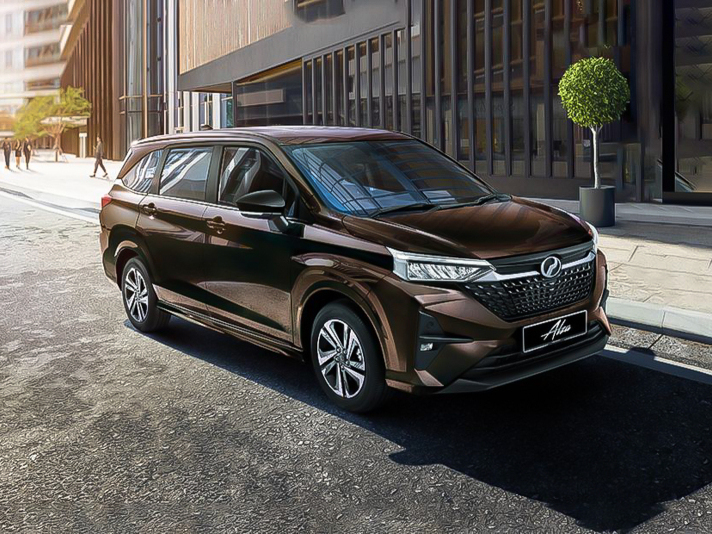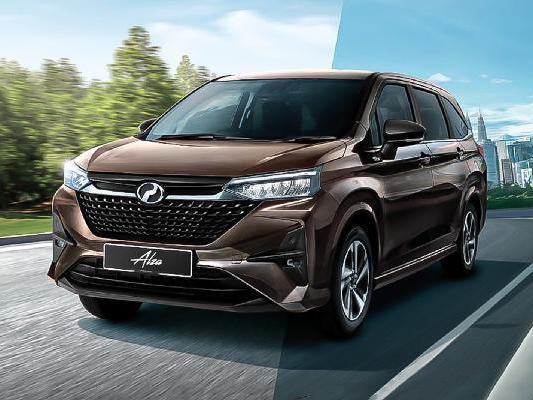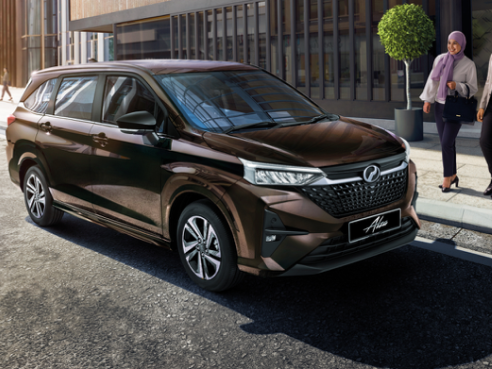Q
how to connect bluetooth in perodua alza
The BYD Atto 3 has officially launched in Malaysia with a price tag of RM149,800 (excluding insurance). This all-electric SUV is turning heads among consumers thanks to its impressive range and generous equipment list. Under the hood (or rather, under the floor), you'll find BYD's 60.48kWh Blade Battery, which delivers a WLTP-certified range of 420 kilometers – more than enough to cover daily commutes and even those spontaneous weekend getaways without breaking a sweat.
But it's not just about range. The Atto 3 comes loaded with premium touches you'd expect in a higher segment: think a smart infotainment system that keeps you connected, a panoramic sunroof to let the sunshine in, and comfortable power-adjustable seats. When you stack up what you get, the value proposition here is pretty strong.
For Malaysian buyers, there's more to consider than just the sticker price. Keep an eye on the government's tax incentives for electric vehicles, like exemptions on import duties and sales tax. These can knock a significant chunk off the overall cost of ownership.
On top of that, BYD is steadily expanding its after-sales service network across Malaysia, meaning owners can look forward to convenient maintenance and servicing. All things considered, the BYD Atto 3 is a compelling option in the electric vehicle space, especially if you're someone who values both environmental sustainability and a tech-forward driving experience.
Special Disclaimer: This content is published by users and does not represent the views or position of PCauto.
Related Q&A
Q
What was the fuel economy of Alza 2018?
The 2018 Alza delivers average fuel economy. Its 1.5-liter naturally aspirated engine paired with a 4-speed automatic transmission returns a combined fuel consumption of approximately 6.5 to 7.0 liters per 100 kilometers. Actual figures may vary depending on driving habits, road conditions, and vehicle maintenance. As a family MPV, its fuel efficiency is par for the course in its class, making it suitable for daily commuting and family use.
If owners want to improve fuel efficiency, they can maintain a steady driving speed, avoid sudden acceleration and hard braking, and regularly replace engine oil and air filters. These simple tips not only help save fuel but also extend engine life.
Additionally, with advancements in automotive technology, hybrid and fully electric models have seen significant improvements in fuel economy in recent years. If fuel consumption is a top priority, these new-technology vehicles are worth considering. However, as an affordable and practical option, the Alza still meets the daily needs of most families.
Q
What are the dimensions of the Alza 2018?
The 2018 Alza measures 4270mm in length, 1695mm in width, and 1600mm in height, with a wheelbase of 2750mm. As a compact MPV, these dimensions offer nimble handling for city driving while ensuring practical interior space, making it ideal for family use. It has a ground clearance of 160mm, which can handle regular road conditions, and a 42-liter fuel tank that meets the needs of daily commuting and short to medium-distance trips. For some extra context, the 2018 Alza uses a front-engine, front-wheel-drive layout. This design helps maximize interior space, especially when it comes to arranging the second and third-row seats. While the third row is more suited for kids or short rides, the overall space performance is still competitive in its class. Additionally, it weighs around 1.2 tons and is paired with a 1.5-liter naturally aspirated engine, striking a good balance between fuel efficiency and power output – perfect for consumers who value practicality and economy.
Q
How many seats does the Alza 2018 have?
The 2018 Alza is a 7-seater compact MPV with a 2+3+2 three-row seating configuration, ideal for families or group outings. The second-row seats slide forward and backward to boost flexibility, while the third row is best suited for kids or short trips. It’s pretty good at space utilization – there’s still basic storage in the trunk when the third row is upright, and folding it down expands cargo capacity even more. The 2018 Alza comes with a 1.5L naturally aspirated engine paired with a 4-speed automatic transmission, focusing on affordability and practicality, with fuel economy that fits daily commuting needs. Among its peers, the seat functions lean into utility – like the split-folding second row, which makes loading longer items easier. Just keep in mind, legroom in the third row might feel a bit tight for adults, so a test drive is recommended. These compact MPVs are popular in the local market because they blend car-like driving feel with the ability to carry multiple people, perfect for budget-conscious buyers who need a 7-seater.
Q
What colors did the Alza 2018 come in?
The 2018 Alza comes with a variety of color options, including Pearl White, Metallic Silver, Metallic Gray, Metallic Black, and Red. These colors are not only classic and timeless but also cater to different consumers' personalized needs. Pearl White and Metallic Silver are the more popular choices because they hide dirt well and are easy to maintain, making them perfect for daily use. On the other hand, Metallic Black and Red give off a sportier vibe, ideal for owners who want a stylish look. Beyond just aesthetics, color choice can also affect a car's resale value. Generally, neutral colors like white and silver are more sought-after in the used car market and tend to hold their value better. Additionally, different colored paints have slight differences in maintenance. Dark-colored paints show scratches more easily and require more frequent waxing and care, while light-colored paints are relatively low-maintenance. If you're considering buying this car, you can choose the right color based on your personal preference and actual usage needs. Also, remember to regularly maintain the paint to keep the car in good condition.
Q
What changes were made to Alza in 2018?
The 2018 Alza gets minor upgrades focused on styling and features. The front end gets a sleeker chrome grille, and new LED daytime running lights boost visibility. Some higher trims also score fresh alloy wheel designs. Inside, the practical layout stays, but seat materials are updated and storage spaces are tweaked. Certain versions add a multifunction steering wheel and an upgraded sound system. Under the hood, it still runs the 1.5L naturally aspirated engine paired with a 4AT gearbox, but the tuning improves low-speed smoothness. Safety-wise, dual airbags and ABS+EBD come standard across the range, while the top trim adds a reverse camera. Notably, this refresh focused on better sound insulation materials, which does a better job of keeping wind noise in check at highway speeds. For used car shoppers, the 2018 model holds strong value on the used market thanks to its reliable reputation and low maintenance costs. Just make sure to check the transmission condition closely—it's the component that tends to need the most attention in this lineup.
Q
What engine options were available in Alza 2018?
The 2018 Alza comes with two engine options: a 1.5-liter 4-cylinder naturally aspirated engine (code 3SZ-VE) and a 1.5-liter 4-cylinder naturally aspirated Dual VVT-i engine (code 1NZ-FE), both known for their reliability and fuel efficiency. The 3SZ-VE engine puts out 104 horsepower and 136 Nm of peak torque, while the 1NZ-FE is slightly more powerful with 107 horsepower and 141 Nm of peak torque. Both are paired with a 4-speed automatic transmission, which works well for city driving. As a family MPV, the Alza's engines prioritize smoothness and durability, making it ideal for daily family use. It also has relatively low maintenance costs and is easy to repair. If you're after more power, keep an eye on newer models—these days, a lot of brands are adding turbocharging or hybrid tech to boost performance and fuel efficiency. But the 2018 Alza still focuses on practicality and affordability, perfect for budget-conscious buyers who value usefulness.
Q
Does the Alza 2018 have good reviews?
The 2018 Alza, as a practical and budget-friendly MPV, generally gets positive reviews, especially suited for family users. Its strengths lie in good space flexibility and fuel efficiency. While the third-row seats are a bit tight, they're acceptable for short trips. The 1.5L engine paired with a 4AT transmission is a mature powertrain with low maintenance costs. The interior focuses on functionality, with materials that meet expectations for its price range. However, in terms of features, it might feel a bit basic compared to competitors from the same era, lacking some modern tech gadgets. The suspension is tuned for comfort, ideal for city driving, but there's noticeable body roll when cornering at higher speeds. It holds its value moderately well in the used car market. As a family runabout, this car checks the boxes, but if you're after better driving dynamics or more tech, you might want to look elsewhere. Potential buyers should definitely test drive it to see if the space and handling fit their needs.
Q
Where was the Alza 2018 manufactured?
The 2018 Alza rolled off the production line at the Karawang plant in Indonesia. As a practical and budget-friendly MPV, it’s won over plenty of family buyers with its flexible interior layout and reliable performance. The main reason it’s built in Indonesia? The region’s well-established manufacturing system and supply chain advantages, which let it meet the needs of Southeast Asian markets. It’s worth mentioning that the 1.5-liter engine under the hood strikes a nice balance between fuel efficiency and power. Plus, with its 7-seat setup, it’s perfect for daily family use or small group getaways. In local markets, its relatively low maintenance costs and ample parts supply further boost its value for money. For consumers considering a used car, the 2018 Alza remains a solid choice—its durability and practicality have stood the test of time, making it capable of meeting most families’ travel needs.
Q
What is the fuel consumption of Alza 2018?
Based on official figures and owner feedback, the 2018 Alza's fuel economy for the 1.5L automatic variant sits around 6.5 to 7.2 liters per 100 kilometers combined. Your actual numbers will vary depending on driving habits, road conditions, and how well you maintain the vehicle – the manual transmission version might be slightly more efficient. Power comes from a 1.5L DVVT naturally aspirated engine paired with either a 4-speed auto or 5-speed manual gearbox. Fuel efficiency is right in the mainstream for its class of MPVs, making it a solid pick for family daily use. To squeeze out better mileage, keep up with regular air filter and spark plug maintenance, check tire pressures often, and avoid sudden acceleration or hard braking. It's also worth noting that MPVs, with their heavier bodies and higher wind resistance, typically drink a bit more fuel than sedans with the same engine size – that's just the nature of the beast. When choosing, you've gotta balance interior practicality against fuel costs.
Q
What is the price of Toyota Zenix 2023?
The 2023 Toyota Zenix is priced between approximately RM 140,000 and RM 170,000 in the Malaysian market, depending on the variant and specifications. Actual prices may vary slightly based on regional dealer promotions or optional extras. Positioned as Toyota's versatile family MPV, the Zenix comes with either a 2.0-liter naturally aspirated engine or a 1.8-liter hybrid powertrain, striking a balance between fuel efficiency and performance. Inside, you'll find a large touchscreen display, smart connectivity features, and Toyota's latest TSS safety suite—all tailored to meet family needs.
It's worth noting that Malaysian MPV buyers typically cross-shop rivals like the Honda BR-V or Mitsubishi Xpander. However, the Zenix holds its own in this segment, leveraging Toyota's strong brand reputation and the added appeal of hybrid technology. If you're in the market, I'd recommend checking with authorized dealers for the latest quotes and promotional packages. Be sure to request a test drive too—you'll want to experience firsthand the hybrid system's smooth power delivery and quiet operation, trends that are quickly gaining traction in Malaysia's automotive landscape.
Popular Cars
Model Year
Car Compare
Car Photo
Latest Q&A
Q
Why is gasoline a fuel?
Gasoline can serve as a fuel because it possesses core properties suitable for providing power and the ability to convert energy. It is a hydrocarbon mixture obtained through fractional distillation and cracking of petroleum, mainly containing C5-C12 aliphatic hydrocarbons, naphthenes, and a small amount of aromatic hydrocarbons. It is characterized by volatility and flammability, with low viscosity facilitating smooth flow in injection systems, and rapid evaporation enabling quick formation of a uniform combustible mixture with air. Gasoline stores chemical energy; when ignited by a spark plug in the engine combustion chamber, it burns rapidly to release a large amount of thermal energy, which pushes the piston to move and converts into mechanical energy, providing power for vehicles such as cars and motorcycles. In addition, the anti-knock property of gasoline (measured by octane number) can adapt to engines with different compression ratios, ensuring stable operation and performance; it has a high energy density, storing more energy per unit volume, good combustion efficiency, and high availability of gas stations for convenient use. Therefore, it has become the main fuel for spark-ignition internal combustion engines and is widely used in transportation and related fields.
Q
What are 1st, 2nd, and 3rd family gases?
The first, second, and third family cars are vehicle categories classified based on the stages of family car-purchasing needs. The first family car is an entry-level economical model, such as the Perodua Axia and Proton Saga, priced at approximately 30,000 to 50,000 Malaysian ringgit. It emphasizes fuel efficiency and practicality, making it suitable for young families purchasing a car for the first time. The second family car falls into the mid-range category, offering more space and enhanced features, such as the Proton Persona and Toyota Vios, priced between 60,000 and 100,000 Malaysian ringgit, catering to the comfort requirements of growing families. The third family car is a premium model or an MPV/SUV, such as the Proton Exora and Honda CR-V, priced above 100,000 Malaysian ringgit. It boasts spacious interiors and upscale configurations, ideal for larger families or long-distance travel. Malaysian consumers typically prioritize fuel efficiency, maintenance costs, and space when selecting a vehicle. Families at different life stages adjust their car choices accordingly. For instance, small families may begin with the first category, upgrade to the second after having children, and larger families often opt for the third category.
Q
What are the four types of natural gas?
Natural gas can be classified into four main types based on its source: gas field gas (pure natural gas), associated petroleum gas, condensate field gas, and coalbed methane. Gas field gas is directly extracted from gas wells, typically containing over 90% methane with minimal impurities. Associated petroleum gas is a byproduct of oil extraction, containing not only methane but also significant amounts of other hydrocarbons such as ethane and propane. Condensate field gas yields light hydrocarbon fractions during extraction, characterized by a high methane content and small quantities of heavier hydrocarbons like pentane. Coalbed methane is extracted from underground coal seams, primarily consisting of methane and nitrogen, and must have a methane content exceeding 40% to be utilized as fuel. Due to compositional differences, these natural gas types vary in calorific value and applications. The first three are commonly used for urban gas supply, whereas coalbed methane requires purification before effective utilization. As a clean and efficient energy source, the development and utilization of these diverse natural gas types play a crucial role in optimizing energy structure.
Q
What are the three types of fuel gas?
Common fuel gases are mainly divided into three types: natural gas, liquefied petroleum gas (LPG), and manufactured gas. Natural gas is a flammable gas existing in nature, with methane as its main component. It is colorless and odorless, leaves no residue after combustion, and has high thermal efficiency, making it a clean energy source. Liquefied petroleum gas is a by-product of the petroleum refining process, whose main components include propane and butane. It is a gas at room temperature but can be converted into liquid through pressurization and cooling, facilitating storage and transportation. Manufactured gas is generated through thermochemical reactions of fossil fuels such as coal or petroleum under specific conditions, with main components including hydrogen, carbon monoxide, and methane. It has low production costs but produces certain pollution after combustion, so ventilation should be ensured during use. These three fuel gases have different application scenarios in the energy supply field, and their calorific values and usage characteristics also vary. For example, the calorific value of natural gas is approximately 33,000-36,000 kcal per cubic meter, that of LPG is about 90,000 kcal per kilogram, and that of manufactured gas is roughly 3,500-4,200 kcal per cubic meter. The different calorific values make them suitable for different energy demand scenarios such as households and industries.
Q
Is unleaded petrol a gas?
Unleaded gasoline is not a gas but a liquid fuel. It refers to gasoline with a lead content of less than 0.013 grams per liter and without the addition of tetraethyl lead as an anti-knock additive during the refining process. Its octane rating is typically 95, slightly lower than the 97 of leaded gasoline. The use of unleaded gasoline can effectively reduce emissions of harmful substances such as hydrocarbons, carbon monoxide, and nitrogen oxides in vehicle exhaust, thereby lowering pollution risks including smog, toxic gases, and acid rain. However, it should be noted that while unleaded gasoline contains no artificially added lead, it still retains trace amounts of lead from crude oil. Additionally, its combustion releases gases, particulate matter, and condensates, with particles smaller than 2 microns in diameter being particularly prone to prolonged suspension in the air and subsequent human inhalation. Thus, potential health impacts remain a concern. Currently, most vehicles can use unleaded gasoline directly, though certain models require selecting the appropriate octane grade as recommended by the manufacturer to ensure optimal engine performance and longevity.
View MoreRelated News

Perodua Alza Interior Design Revealed: Malaysia's Top Choice for Family MPV
AshleyJul 23, 2025

A Complete Guide to Perodua Alza: Must-Read Money-Saving Tips for Car Buyers
RobertMar 25, 2025

Perodua Alza: Priced from RM 62,500, the most cost-effective all-round MPV?
LienMay 31, 2024

Perodua Ativa Hybrid may be launched, a fuel-efficient small car that doesn't require charging
MichaelDec 26, 2025

Perodua Myvi and Bezza may undergo major upgrades in 2026
LienDec 24, 2025
View More


















Pros
Cons